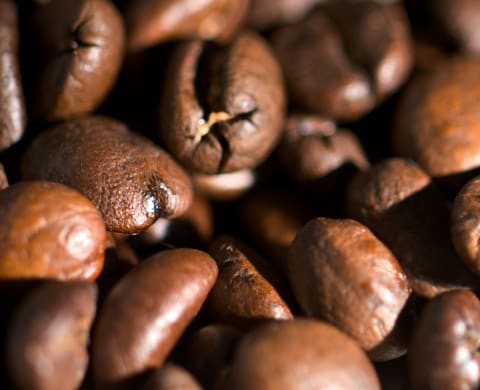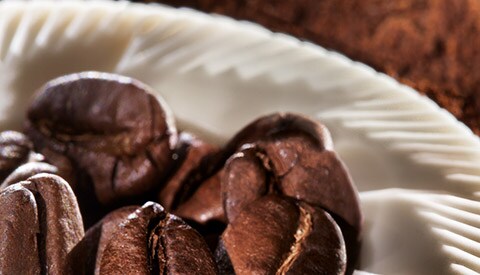The process of
Making coffee
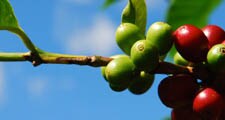
The coffee plant
Coffee beans are actually the seeds inside the edible cherries of the Coffea plant. The green beans are then roasted to varying degrees to achieve the desired flavour – before being ground and brewed.

The perfect climate
Coffee plants are cultivated in tropical and sub-tropical parts of the world. They thrive at high altitudes and in a cool-humid climate.

Arabica or Robusta
There are two kinds of coffee beans: Arabica and Robusta. Arabica is the most popular variety and has a subtle aromatic flavour; Robusta contains more caffeine. Most coffee blends contain a combination of both.
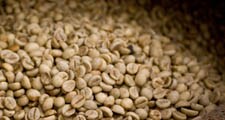
Harvest and processing
When fully-grown, the red coffee cherries are hand-picked – after which the seeds extracted and dried. Unripe cherries are left on the plant to mature.

From green to brown
To achieve the desired flavour and highlight certain characteristics, the green coffee beans are roasted to varying degrees. There are three main roast levels: light brown, medium brown and dark brown. The darker the roast – the less caffeine.

Creating blends
Distinctive, bespoke coffees – or a consistently tasting flavour – is achieved by blending together different types of coffee beans and roast levels. It’s an art form which requires nosing and ‘cupping’ (tasting) and a refined palette. Beans are blended according to the individual characteristics and qualities brought out during roasting, such as cocoa flavours, floral aromas, rich notes and bright acidity.

Brewing the perfect cup
So many elements go into creating the perfect brew: the grind, temperature, extraction time, coffeewater ratio. Our automatic coffee machines can do it all for you – at the push of a button. While our manual coffee makers will bring out your inner barista.

Adding milk
An espresso has its own crema layer. For other types of coffee you can steam, froth and whisk away to your heart’s content! Use whole milk for the best taste and texture – and always use it straight from the fridge.

The coffee plant
Coffee beans are actually the seeds inside the edible cherries of the Coffea plant. The green beans are then roasted to varying degrees to achieve the desired flavour – before being ground and brewed.

The perfect climate
Coffee plants are cultivated in tropical and sub-tropical parts of the world. They thrive at high altitudes and in a cool-humid climate.

Arabica or Robusta
There are two kinds of coffee beans: Arabica and Robusta. Arabica is the most popular variety and has a subtle aromatic flavour; Robusta contains more caffeine. Most coffee blends contain a combination of both.

Harvest and processing
When fully-grown, the red coffee cherries are hand-picked – after which the seeds extracted and dried. Unripe cherries are left on the plant to mature.

From green to brown
To achieve the desired flavour and highlight certain characteristics, the green coffee beans are roasted to varying degrees. There are three main roast levels: light brown, medium brown and dark brown. The darker the roast – the less caffeine.

Creating blends
Distinctive, bespoke coffees – or a consistently tasting flavour – is achieved by blending together different types of coffee beans and roast levels. It’s an art form which requires nosing and ‘cupping’ (tasting) and a refined palette. Beans are blended according to the individual characteristics and qualities brought out during roasting, such as cocoa flavours, floral aromas, rich notes and bright acidity.

Brewing the perfect cup
So many elements go into creating the perfect brew: the grind, temperature, extraction time, coffeewater ratio. Our automatic coffee machines can do it all for you – at the push of a button. While our manual coffee makers will bring out your inner barista.

Adding milk
An espresso has its own crema layer. For other types of coffee you can steam, froth and whisk away to your heart’s content! Use whole milk for the best taste and texture – and always use it straight from the fridge.
Bean types

Arabica
The champagne of coffee, Arabica beans have a gorgeous aromatic richness, producing a taste that is mild and deep at the same time.

Robusta
The caffeine queen of coffee, Robusta beans contain roughly double the stimulant than Arabica beans. This gives the coffee a strong, slightly bitter taste.
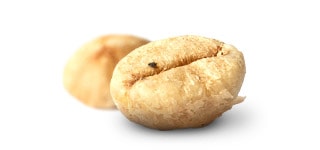
Kopi Luwak
For an unusual gourmet experience, try the highly-prized beans extracted from the droppings of the Indonesian civet cat. This mongoose-like creature feasts on coffee cherries before pooping out the pits. The digestive process the cherries undergo lends the beans their distinctive flavour.
